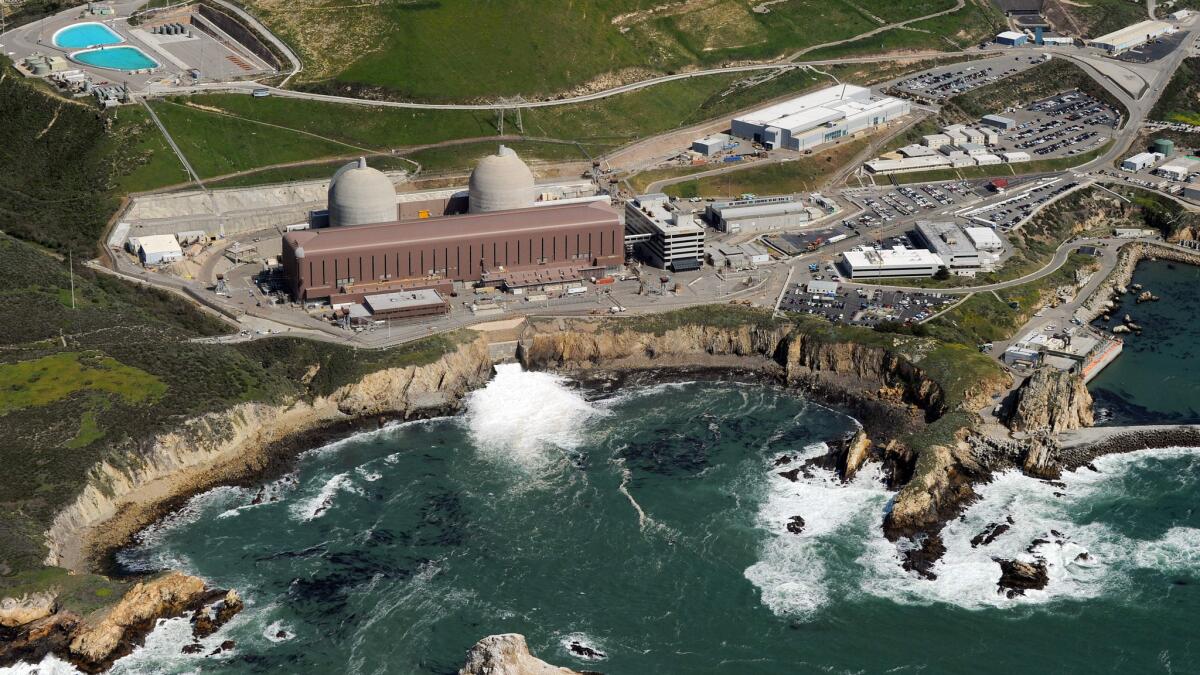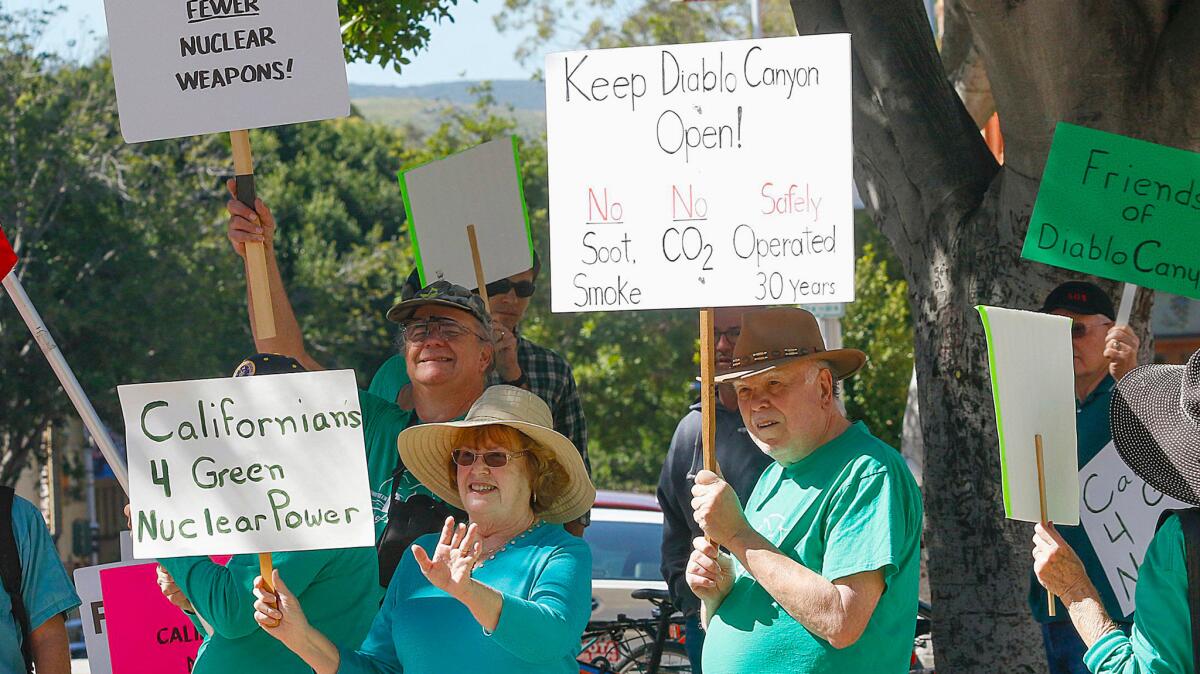Opinion: A ‘no nukes’ victory? California’s short and complicated history with Diablo Canyon and nuclear power

The news Tuesday that Diablo Canyon nuclear power plant – the last nuke in the state -- will close for good in 2025 puts an ending on this short and contentious chapter of California’s history.
Pacific Gas & Electric Co. said Tuesday that it has worked out a deal with environmental groups to let the operating licenses for Diablo Canyon’s two units expire and decommission the plant just 40 years after it opened. The utility says it will start planning now to balance the lost power with other renewable sources, like solar and wind, and expand storage capacity.
It’s a significant moment for Californians of a certain age – cough, cough – brought up in the “No Nukes” culture of the 1970s and 1980. At the time, many people were deeply suspicious of nuclear power, and hating Diablo Canyon (what an appropriate name, right?) was a thing long before the plant actually opened. Especially in my house, down the highway from the San Onofre Nuclear Generating Station in San Diego County. As a kid I even spent some extremely dull days lounging in the Diablo Canyon blockade camp near San Luis Obispo while my activist mother and other adults did their blockading thing to try and stop the plant from opening. Obviously, it didn’t work.
That a terrible accident would happen seemed a given, what with all the earthquake faults running through the state. If not that, then surely someone would push the wrong button or fall asleep on the job.
These weren’t unfounded fears. The accident at Pennsylvania’s Three Mile Island in 1979 and another one at Chernobyl in 1986 provided real-life scenarios for disaster. And movies such as “Silkwood” and “The China Syndrome” didn’t help the collective distrust of nuclear power.
Imagine how terrifying it was for a kid already overly concerned with nuclear war to contemplate the possibility of a meltdown so severe it would burrow through the Earth’s core and come out the other side.
None of those things happened in about a half-century of using nuclear power, and for that we are most fortunate. Nevertheless, the tide of popular opinion never shifted in favor of nukes. And after the unplanned 2013 shutdown of San Onofre, the decision in 2010 to end once-through cooling at coastal power plants, including Diablo Canyon, and the accident in Fukushima Daiichi plant after the 2011 earthquake and tsunami in Japan, it seemed inevitable this day would come.
So victory, right? It’s a little more complicated now that climate change is a bigger threat.

A contingent of the environmental advocates who support nuclear power is protesting the shutdown of the Diablo Canyon. The advocates said Tuesday they will fight the closure at every step along the regulatory process because they believe that there’s no way PG&E can replace the power from nuclear without using fossil fuels. Diablo Canyon accounts for about 20% of PG&E’s power portfolio. If so, it would set the state way back on its climate change goals. A bigger worry is the message this would send to the nation’s remaining nuclear generating stations.
Are we letting our fears over nuclear power get in the way of the greater environmental good? That’s a valid question. It’s one that lawmakers and regulators must ponder as they contemplate the Diablo Canyon shutdown proposal, lest we trade abstract fear about nuclear winter for the clear and present danger of climate change.
Follow me @marielgarzaLAT
More to Read
A cure for the common opinion
Get thought-provoking perspectives with our weekly newsletter.
You may occasionally receive promotional content from the Los Angeles Times.











